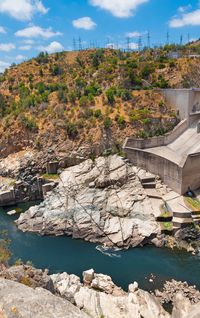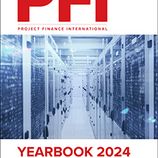The largest ever single asset tax equity deal was closed for the Vineyard Wind offshore wind farm this year. The billion dollar-plus financing will be the first of many whale-sized deals. By Nic Stone.
The harbour at New Bedford on Massachusetts’ southern coast is shielded from the wild winds of the North Atlantic across Buzzards Bay by the Elizabeth Islands. The refuge from the tempestuous seas saw the town boom as a staging post for whaling expeditions in centuries gone by, having been immortalised as the dry-land setting for Herman Melville’s Moby Dick.
Those wild winds of the Atlantic have brought a different sort of boom this time and the harbour is now one of the main staging posts for the installation of offshore wind in the northeast US. Nacelles the size of buildings and turbines as long as planes have replaced the lobster traps and fishing nets.
New Bedford is the town where Copenhagen Infrastructure Partners (CIP) and Avangrid’s 806MW Vineyard Wind I offshore wind farm’s construction is being run from. It has been a busy few months for the group, which in October installed the first of 62 GE Haliade-X turbines from the town and then promptly proceeded to close a US$1.2bn tax equity deal backing the scheme, in a deal that brought a number of key players in the market together for their biggest show yet.
It is the largest ever single-asset tax equity deal closed in the US tax equity market and comes at a time when investment in the space is expected to quadruple from US$20bn to US$80bn per year on the back of the raft of benefits that came from the Biden Administration’s Inflation Reduction Act or IRA. Offshore wind projects and their sizeable price tags are set to command a large chunk of that.
Vineyard closed an investment tax credit or ITC deal at 30% via JP Morgan, Bank of America, and Wells Fargo, although the group did try to see if it could secure the increased 40% ITC made possible by the IRA. Unfavourable definitions from the Treasury and IRS meant the group had to settle for the lower percentage.
The deal is the first for a commercial scale offshore wind project and is expected to be the first of many in the sector over the coming years, with deals upwards of US$2bn slated to be closed soon. CCA Group, Santander, and Kirkland & Ellis advised the sponsors.
But as whalers would set out to sea in years gone by, so too was this a tale of many years of work – although I do not compare working under Ahab on the Pequod to working under Solomon at Goldman. Meetings for a tax equity deal backing the offshore wind farm first started in 2018, according to bankers who worked on the financing – who asked for anonymity to discuss it.
The five years from those first meetings to close reflect not only the complexity of the deal itself, but the problematic backdrop that the project faced throughout its development. The aim among market participants with this first major deal was to show it can be done and to provide a template for the other major offshore wind farm tax equity deals to come.
Some of the things holding up the pace of the tax equity deal were things that hampered the industry writ large. The Trump administration was seen as “not very friendly to offshore wind”, said one banker, which meant the project first struggled to pass the review stage. A change of administration and the pushing of environmental approvals meant financing discussions could continue in earnest.
But then this year, inflation, interest rate rises, and insufficient power purchase agreements battered the industry. Another challenge was around the insurance market in the US for offshore wind – “tightness and availability of insurance was a huge issue”, one banker on the deal said.
“For the question of the PTC or ITC, if you look at the build cost and the capacity factor, the ITC makes the most sense,” a banker on the deal said. “The cost per megawatt is three times more than onshore wind so it makes more sense that way to get 30% of the cost in tax equity.”
The deal was structured as a traditional partnership flip. “The due diligence was much more intensive, but the structure was very similar,” one source added. Again, the hope is that the hard slog of getting the Vineyard deal done will mean the upcoming deals are easier to close.
In a partnership flip, the sponsors and tax equity investors form an equity partnership to own the renewables assets, in this case an offshore wind farm. The partnership independently allocates income, tax credits, and cash to the partners.
Terms on the deal were at the high-end of where onshore wind deals are priced, a source said, declining to give specifics. But the pricing was where market participants thought it would shake out.
“The cashflow is pretty rich because of the high PPA price, so there is a lot of cashflow – so they are able to raise a lot more debt and not as much tax equity,” one source said.
The original debt financing closed in late 2021 and brought a whopping 25 banks from the market together. It is interesting to consider that the 25 banks on that deal dwarf the mere three on the tax equity deal, despite it being around half the size.
The main project finance loan has a nearly ten-year tenor, maturing on April 30 2031. Final sizing was US$2.344bn. There was a standby letter of credit signed for US$104m, maturing in just under three years on April 30 2024. Pricing was Libor plus 137.5bp with commitment fees of 40bp. Project costs are upwards of US$4.1bn.
The nine banks that led the deal were Santander, which acted as financial adviser on the tax equity transaction, BNP Paribas, BBVA, Bank of America, MUFG, Credit Agricole, JP Morgan, Natixis, and NatWest. They then brought more banks in during syndication, namely Apple Bank, Associated Bank, Sabadell, Bank of China, Korea Development Bank (KDB), CaixaBank, KfW, BayernLB, CoBank, Commerzbank, Intesa Sanpaolo, Scotiabank, Norinchukin, Helaba, Shinsei Bank, and Standard Chartered.
“Finalising this tax equity transaction is a critical milestone in executing the financing plan for Vineyard Wind 1,” said Avangrid chief executive officer Pedro Azagra. “It will allow us to continue financing the project to make it operational.”
The size of the tax equity deal kept the major players in the market busy and market participants had to play a waiting game while the deal was done. “Many of the big players have been tied up with the Vineyard deal,” said one offshore wind project sponsor.
Funding of the deal is ongoing, while it will be partially sold on to corporate buyers via transfer deals, according to sources. This is aimed at helping the major players in the market commit to upcoming offshore deals, which as mentioned could top the US$2bn mark per project even as soon as the next deal done.
But those key players won’t be able to do it themselves. “All of these projects are going to require billions of tax equity dollars and the traditional bank investors won’t be able to do that,” said one of the bankers of the Vineyard deal.
But the transfer market, which has picked up the second half of 2023, will help. “The transfer market is pretty active and pretty open and a lot of corporates will want to play in the market,” said another source.
The Vineyard deal was able to be done as a sort of hybrid between the traditional tax equity market and the new transferable market. This hybrid structure brought the banks in as the traditional tax equity investors or underwriters before they on-sell around 50% of their ticket to a corporate buyer or buyers.
“This structure is flexible and you can bring in one partner or four or five,” said one deal watcher. “The next project is going to require US$2bn of tax equity. You can have 20 investors, but you will need to start with a few anchor investors or underwriters.” Banks are still expected to do up to 90% of the deal underwriting, sources estimate for the new market.
The appetite is expected to be there among the corporates, or at least the underwriting banks are telling themselves that. But that is the point of the IRA and the transferability regimes. And for that type of deal the upfront ITC benefits are attractive.
“The ITC helps because a lot of corporates know their tax capacity and these credits can be carried,” a banker said.
Somewhat tempering the upcoming demand for offshore wind tax equity is the uncertain nature of the market overall. “The offshore market now has all the issues around the costs and the renegotiation of PPAs and cancellations and delays,” said one source, “so the need for tax equity is still there but not as acute as first expected.”
Still, Orsted is expecting to come to market soon with a series of tax equity deals backing its renewables projects including a potentially US$2bn offshore wind deal, likely to be the next major offshore wind tax equity deal in the market.
The company recently explained why it believes it can get 40% tax treatment under the ITC rules, up from the standard 30%, on its 924MW Sunrise and 704MW Revolution Wind offshore projects.
Chief executive Mads Nipper told analysts: “To your question about what gives us higher confidence in 40% ITC, I dare to say it's the first time in my life that I've at least been pretty happy about soil contamination. But we are taking that soil to test and it is a situation where, due to what we have found in the testing of the landing point for our power, it now qualifies to be a brownfield under the energy community’s credit, which qualifies it even in their preliminary guidelines, which is what gives us, along with Revolution Wind, a very high reason to believe that this would qualify."
Orsted and Eversource reached a final investment decision on Revolution Wind off the coast of Point Judith, Rhode Island, despite Orsted taking a US$462m impairment on the project in its Q3 results.
Overall, Orsted increased its US$2.4bn provision on its US assets made in late August to US$4bn in its Q3 results and added that further provisions of US$1.1bn to US$1.5bn could be made due to the cancellation of the 1.1GW Ocean Wind 1 and 1.1GW Ocean Wind 2 projects off New Jersey. The biggest hit comes on Ocean Wind 1, which was the most advanced scheme and suffered from major supply chain issues.
"Significant adverse developments from supply chain challenges, leading to delays in the project schedule, and rising interest rates have led us to this decision," Nipper said. He told analysts that rising interest rates were the biggest structural challenge facing the offshore wind industry.
The new tax equity paradigm is, of course, going through some growing pains on the back of some of those guidance necessities and macro issues, with deal flow expected to pick up once the market matures despite the overwhelming promise of the IRA.
“The Inflation Reduction Act marked the most significant action Congress has taken on clean energy and climate change in our nation’s history, and [the Vineyard financing] is a critical reminder of the impact the IRA is having here at home,” said Congressman Bill Keating representing Massachusetts’s 9th District.
“The closing of this transaction marks a critical step for the financing of Vineyard Wind 1, and in turn for our clean energy economy.”
To see the digital version of this report, please click here.
To purchase printed copies or a PDF of this report, please email leonie.welss@lseg.com














